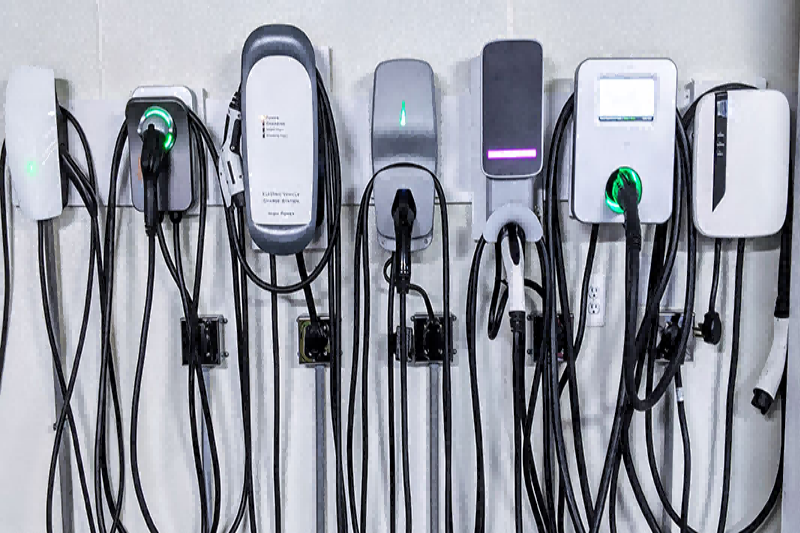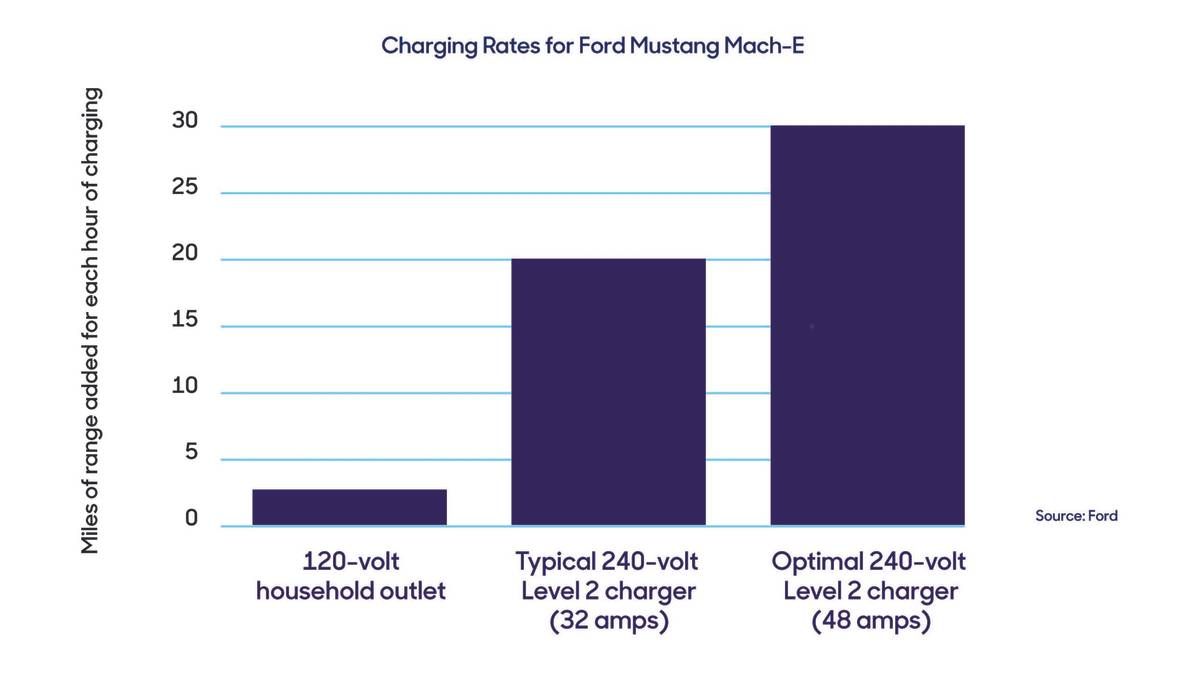We’re endlessly annoyed by the Level 2 distinction because it seems to represent one thing. Hardly. As we detail in What Is Level 1, 2, 3 Charging?, Level 2 represents voltage but not current, measured in amps, and both are factors that determine how quickly you can recharge an EV. We’ll use a couple Teslas to illustrate, merely because the company kindly provides this broad level of detail: At 12 amps a Level 2 charger will add 11 miles of range per hour of charging to a small Model 3 sedan, while a 48-amp charger will add 44 miles in the same period. Remember, both of these chargers are Level 2. The larger, less-efficient Tesla Model X SUV would add 5 miles and 30 miles using the same amp levels in an hour. See how Level 2 merely means better than Level 1 but doesn’t tell you the whole story?
If you’d prefer a non-Tesla example, Ford says a base Mustang Mach-E averages 20 miles of range per hour on a 240-volt outlet and 30 miles on its 240-volt, 48-amp Connected Charge Station. Don’t get the idea that a Tesla charger could charge the Mach-E faster than any other Level 2 unit — AC chargers all deliver their rated power. If one vehicle charges faster than another, it’s because the vehicle itself is more efficient, in which case the same amount of power over the same period translates to more miles of range.
Choosing the Right Amp Rating
When choosing your charger’s fixed or adjustable amp rating (see next entry), you’ll want to know your car’s maximum charging rate in kilowatts, such as 10.5 kW to use the Mach-E as an example. Multiply that by 1,000 to get watts and you have 10,500 watts. Divide that by the 240 volts and, voila, you get 43.75 amps. That means a 48-amp charger would fill the Mach-E’s battery as quickly as possible, and a 40-amp maximum charger wouldn’t charge the Mach-E as fast as the car is capable. Yes, it should be simpler than this, but the industries involved haven’t caught on yet.
Remember that you can’t give an EV too much power, so don’t be afraid to go too high or future-proof your installation. Do be concerned about not having as much power as your EV can use if you can afford the required circuit.
Post time: May-09-2023










